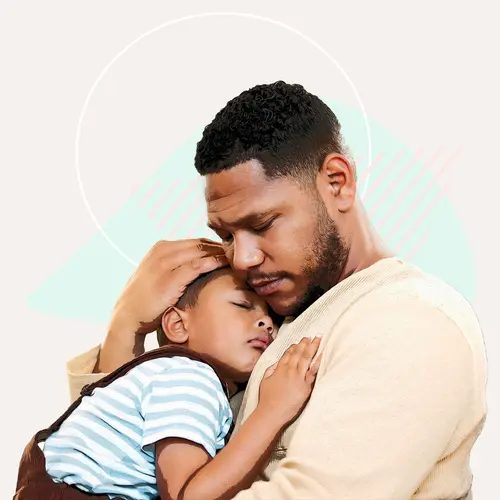As your babies get older -- and grow out of that maddening I-must-put-everything-in-my-mouth phase -- you can start teaching them habits that will protect them from germs like cold and flu viruses. How soon? The sooner the better.
"Good hygiene habits are much easier to introduce when your kids are young," says Laura A. Jana, MD, a pediatrician in Omaha, Neb. and co-author of Heading Home with Your Newborn and Food Fights. "Bad habits are hard to break."
Adopting healthy habits for kids can have concrete benefits. Dodging just one or two of those day care cold viruses could save you a lot of misery. And healthy habits can help protect your child from swine flu this fall and winter. Even if the benefits aren't immediate, teaching healthy habits will pay off.
"If they start learning proper hygiene when they're young, they may not get sick as much when they're older," says TanyaRemer Altmann, MD, a pediatrician and author of Mommy Calls:Dr. Tanya Answers Parents' Top 101 Questions About Babies and Toddlers.
So what sort of healthy habits for kids are realistic? Can a preschooler really learn ways to get protection from cold and flu viruses? Here's what the experts have to say.
Healthy Habits for Kids: Getting in a Routine
When teaching healthy habits, focus on what's important. You probably don't need to lecture toddlers on the germ theory of disease. Concepts like contagion are probably too hard to grasp for little kids.
"You really can't teach a preschooler to stay away from a friend who's coughing," Jana tells WebMD.
So instead of explaining, the key is to practice and ritualize some good behaviors. If you make them systematic, the odds are much better that you kids will stick with them -- and stay a little healthier as a result.
"If you make good habits part of a routine, it all becomes much easier," says Jana. "Your kids will do them without thinking."
Healthy Habits for Kids: Hand Washing
When it comes to healthy habits for kids, hand washing is the most important one. To make it work, it's got to be built into their daily routines.
"Parents should make hand washing a ritual, like brushing their teeth," says Jana. You don't have to do it so obsessively that their hands get chapped. But you should always have your kids wash their hands:
- When they arrive at day care or preschool
- Before they eat
- After changes or after using the potty or toilet
- After a play date
- As soon as they come in the house -- whether it's from school or from playing in the yard
The key is consistency. Get them to do it every time. If you do, your kids might start hand washing automatically. They might even start reminding you if you forget.
It's also important to do hand washing well. Always use warm water and soap. The CDC recommends that people wash their hands for the amount of time it takes to sing "Happy Birthday" twice -- about 15 to 20 seconds.
If soap and water aren't available, an alcohol-based gel will work too. Just make sure that your kids really scrub their hands for about 20 seconds. They're done when the gel has completely evaporated.
Of course, some kids will resist hand washing. What can you do? Here are a few tips.
- Make them do dishes. Lots of toddlers and preschool age kids love playing in the sink. So instead of getting into a struggle about hand washing, just stand them on a chair by the sink, give them the soap and a dish to wash. If they keep at it for a few minutes, they'll probably get their hands pretty clean.
- Choose the right soap. A bar of white soap can seem pretty dull. But if you can find a soap that catches their attention -- with a fruity smell, or maybe a cartoon character on the bottle -- you might have better luck with hand washing. To add to the mystique, you could make the soap especially for your child's use. Keep it on a high shelf and take it down only when she needs it.
Healthy Habits for Kids: Other Tips
Hand washing is the most important, but there other healthy habits for kids that can reduce the spread of germs.
Cough into the arm. Many of us were told as kids to cover our mouths with our hands when we coughed or sneezed. The problem with that old advice is that it results in a handful of germs -- which are then spread on everything a kid touches.
Experts now recommend that kids -- and adults -- cough and sneeze into the crook of their arms. That way, the germs are less likely to wind up coating every surface in the room.
Use tissues. It won't always work, but you can try."Some preschool kids are capable of blowing their noses," says Altmann. "Whether the tissue ends up in the trash can or on the floor is another story, of course."
Teach by example. As any parent knows, trying to get a toddler to do something can be maddening. Asking, or demanding, or begging your kid to adopt healthy habits might seem hopeless.
But one good strategy to instill healthy habits in kids is to get your kids to mimic you. Model good behavior. Make a show of hand washing when you get home from work -- and do it for the full 20 seconds. Always cough and sneeze into your own arm. Your kids will probably notice, and over time it could really have the desired effect.
And if you're really conscientious about modeling healthy habits, you could get an added bonus: you might get sick less too.


